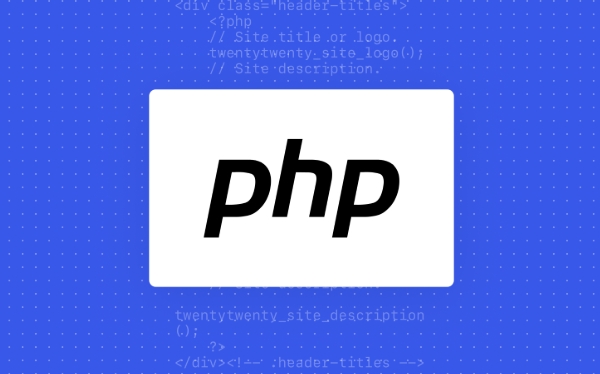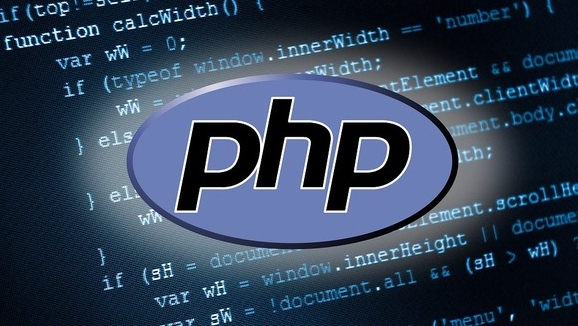Use Laragon to quickly set up a PHP development environment
Jun 26, 2025 am 01:22 AMLaragon simplifies PHP development setup on Windows by bundling Apache, MySQL, PHP, and tools into one package. 1) Download and install Laragon, choosing a path without spaces. 2) Launch the app and start all services. 3) Access localhost to confirm installation success. 4) Place project files in the www directory for automatic virtual host setup. 5) Use built-in CLI tools like Composer for project creation and management. Laragon also supports multiple PHP versions, environment variables, MailHog for email testing, and offers quick access controls via the system tray menu, making local PHP development fast and hassle-free.

Setting up a PHP development environment doesn’t have to be complicated. Laragon makes it fast and painless — especially if you're working on Windows. You don’t need to juggle multiple tools or spend hours configuring servers. With Laragon, everything you need is bundled into one neat package.

What is Laragon and why use it?
Laragon is a lightweight, portable, and powerful development environment for Windows that includes Apache, MySQL, PHP, and other useful tools out of the box. It's ideal for developers who want to get started quickly without dealing with manual setup.

Why it’s handy:
- Pre-configured stack so you can start coding right away
- Comes with built-in support for popular frameworks like Laravel, WordPress, etc.
- Easy to manage multiple projects with virtual hosts
- Supports CLI tools like Composer, Node.js, Yarn
You basically install it once, and from there, it handles most of the backend stuff for you.

How to install and configure Laragon
Getting Laragon up and running takes just a few steps:
- Download the installer – Go to the official Laragon website and grab the latest version.
- Run the installer – Choose your installation path (avoid spaces in folder names if possible) and let it install.
- Launch Laragon – Once installed, open the app and click "Start All" to boot up Apache, MySQL, and other services.
-
Check localhost – Open your browser and go to
http://localhost. If you see the Laragon welcome page, you're good to go.
One thing to watch out for: sometimes port 80 might be blocked by other apps like Skype or IIS. If Apache fails to start, check the error log and try switching to port 8080 or stop conflicting services.
Setting up a new PHP project
Once Laragon is running, creating a new project is straightforward:
- Place your project files inside the
wwwdirectory (usually found atC:\laragon\www) - Each folder in
wwwbecomes a separate site – for example,C:\laragon\www\myprojectbecomeshttp://myproject.test - No need to manually edit host files – Laragon automatically creates
.testdomains - Use the built-in terminal (
Ctrl Alt T) to run commands likecomposer create-projectornpm install
For frameworks like Laravel:
composer create-project --prefer-dist laravel/laravel myproject
Then navigate to http://myproject.test in your browser.
If things aren’t loading, make sure the database credentials in your .env file match what’s in Laragon (default user is root, no password).
Useful features you shouldn’t miss
Laragon has some nifty tools that simplify common tasks:
-
Environment variables – The
.envfile in your project controls settings like DB connections, app key, etc. - Multiple PHP versions – You can switch between different PHP versions directly from the Laragon menu.
-
Auto virtual hosts – Just drop a folder in
www, and it becomes a new domain. - MailHog – Test email sending locally without real SMTP setup.
- Quick access menu – Right-click the Laragon icon in the system tray to restart services, open terminals, or manage configs.
These small touches save time and reduce friction when switching between projects or debugging issues.
That’s basically all you need to get going. Laragon handles the heavy lifting, so you can focus on writing code instead of fighting with server config. It’s not flashy, but it works well for local PHP development — especially if you value speed and simplicity.
The above is the detailed content of Use Laragon to quickly set up a PHP development environment. For more information, please follow other related articles on the PHP Chinese website!

Hot AI Tools

Undress AI Tool
Undress images for free

Undresser.AI Undress
AI-powered app for creating realistic nude photos

AI Clothes Remover
Online AI tool for removing clothes from photos.

Clothoff.io
AI clothes remover

Video Face Swap
Swap faces in any video effortlessly with our completely free AI face swap tool!

Hot Article

Hot Tools

Notepad++7.3.1
Easy-to-use and free code editor

SublimeText3 Chinese version
Chinese version, very easy to use

Zend Studio 13.0.1
Powerful PHP integrated development environment

Dreamweaver CS6
Visual web development tools

SublimeText3 Mac version
God-level code editing software (SublimeText3)
 PHP Variable Scope Explained
Jul 17, 2025 am 04:16 AM
PHP Variable Scope Explained
Jul 17, 2025 am 04:16 AM
Common problems and solutions for PHP variable scope include: 1. The global variable cannot be accessed within the function, and it needs to be passed in using the global keyword or parameter; 2. The static variable is declared with static, and it is only initialized once and the value is maintained between multiple calls; 3. Hyperglobal variables such as $_GET and $_POST can be used directly in any scope, but you need to pay attention to safe filtering; 4. Anonymous functions need to introduce parent scope variables through the use keyword, and when modifying external variables, you need to pass a reference. Mastering these rules can help avoid errors and improve code stability.
 How to handle File Uploads securely in PHP?
Jul 08, 2025 am 02:37 AM
How to handle File Uploads securely in PHP?
Jul 08, 2025 am 02:37 AM
To safely handle PHP file uploads, you need to verify the source and type, control the file name and path, set server restrictions, and process media files twice. 1. Verify the upload source to prevent CSRF through token and detect the real MIME type through finfo_file using whitelist control; 2. Rename the file to a random string and determine the extension to store it in a non-Web directory according to the detection type; 3. PHP configuration limits the upload size and temporary directory Nginx/Apache prohibits access to the upload directory; 4. The GD library resaves the pictures to clear potential malicious data.
 Commenting Out Code in PHP
Jul 18, 2025 am 04:57 AM
Commenting Out Code in PHP
Jul 18, 2025 am 04:57 AM
There are three common methods for PHP comment code: 1. Use // or # to block one line of code, and it is recommended to use //; 2. Use /.../ to wrap code blocks with multiple lines, which cannot be nested but can be crossed; 3. Combination skills comments such as using /if(){}/ to control logic blocks, or to improve efficiency with editor shortcut keys, you should pay attention to closing symbols and avoid nesting when using them.
 How Do Generators Work in PHP?
Jul 11, 2025 am 03:12 AM
How Do Generators Work in PHP?
Jul 11, 2025 am 03:12 AM
AgeneratorinPHPisamemory-efficientwaytoiterateoverlargedatasetsbyyieldingvaluesoneatatimeinsteadofreturningthemallatonce.1.Generatorsusetheyieldkeywordtoproducevaluesondemand,reducingmemoryusage.2.Theyareusefulforhandlingbigloops,readinglargefiles,or
 Tips for Writing PHP Comments
Jul 18, 2025 am 04:51 AM
Tips for Writing PHP Comments
Jul 18, 2025 am 04:51 AM
The key to writing PHP comments is to clarify the purpose and specifications. Comments should explain "why" rather than "what was done", avoiding redundancy or too simplicity. 1. Use a unified format, such as docblock (/*/) for class and method descriptions to improve readability and tool compatibility; 2. Emphasize the reasons behind the logic, such as why JS jumps need to be output manually; 3. Add an overview description before complex code, describe the process in steps, and help understand the overall idea; 4. Use TODO and FIXME rationally to mark to-do items and problems to facilitate subsequent tracking and collaboration. Good annotations can reduce communication costs and improve code maintenance efficiency.
 Learning PHP: A Beginner's Guide
Jul 18, 2025 am 04:54 AM
Learning PHP: A Beginner's Guide
Jul 18, 2025 am 04:54 AM
TolearnPHPeffectively,startbysettingupalocalserverenvironmentusingtoolslikeXAMPPandacodeeditorlikeVSCode.1)InstallXAMPPforApache,MySQL,andPHP.2)Useacodeeditorforsyntaxsupport.3)TestyoursetupwithasimplePHPfile.Next,learnPHPbasicsincludingvariables,ech
 How to access a character in a string by index in PHP
Jul 12, 2025 am 03:15 AM
How to access a character in a string by index in PHP
Jul 12, 2025 am 03:15 AM
In PHP, you can use square brackets or curly braces to obtain string specific index characters, but square brackets are recommended; the index starts from 0, and the access outside the range returns a null value and cannot be assigned a value; mb_substr is required to handle multi-byte characters. For example: $str="hello";echo$str[0]; output h; and Chinese characters such as mb_substr($str,1,1) need to obtain the correct result; in actual applications, the length of the string should be checked before looping, dynamic strings need to be verified for validity, and multilingual projects recommend using multi-byte security functions uniformly.
 Quick PHP Installation Tutorial
Jul 18, 2025 am 04:52 AM
Quick PHP Installation Tutorial
Jul 18, 2025 am 04:52 AM
ToinstallPHPquickly,useXAMPPonWindowsorHomebrewonmacOS.1.OnWindows,downloadandinstallXAMPP,selectcomponents,startApache,andplacefilesinhtdocs.2.Alternatively,manuallyinstallPHPfromphp.netandsetupaserverlikeApache.3.OnmacOS,installHomebrew,thenrun'bre






